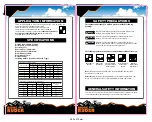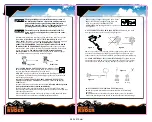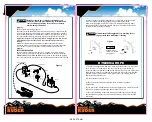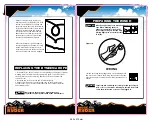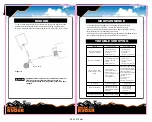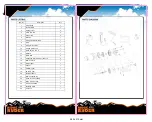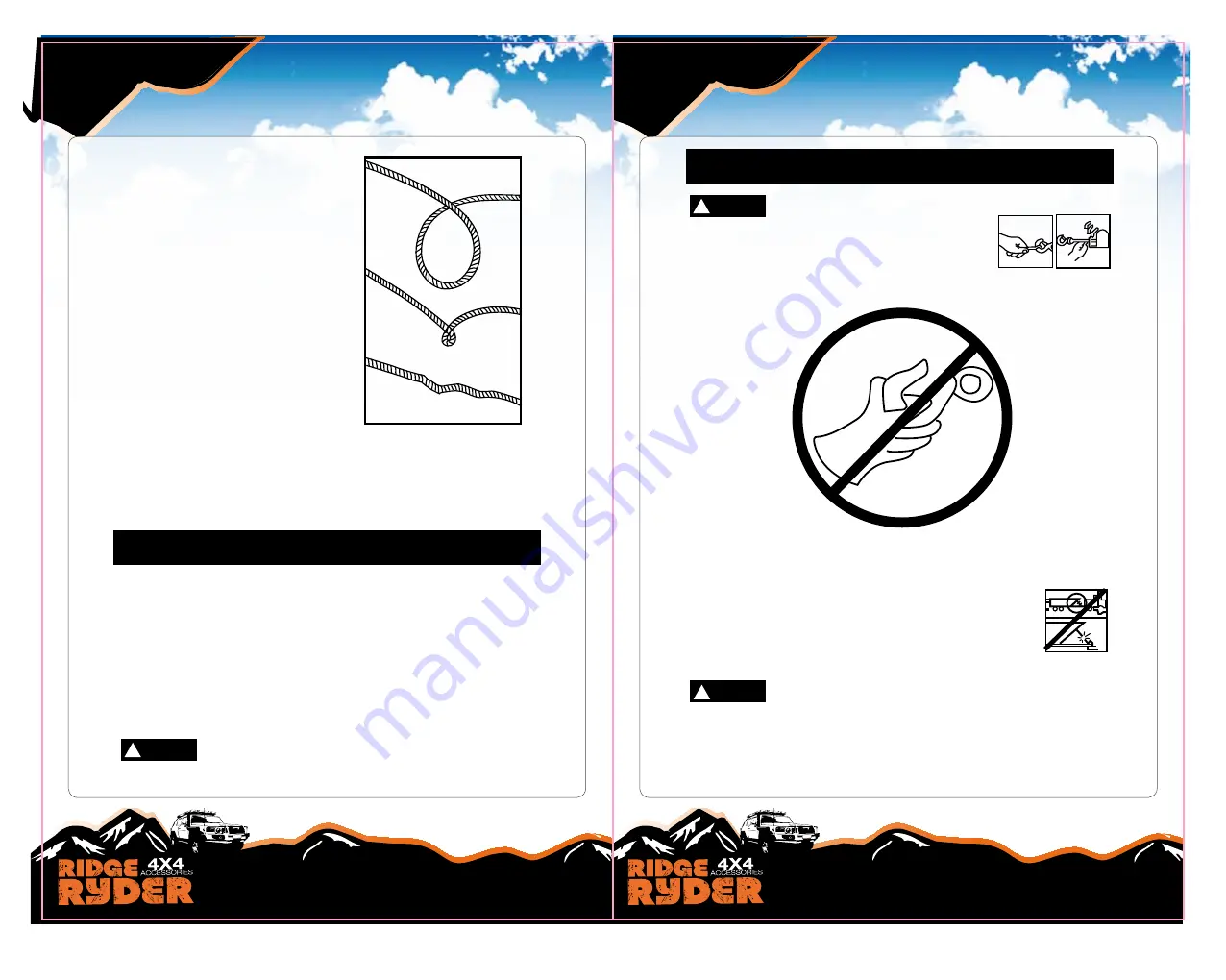
PREPARING THE WINCH
Wear heavy leather gloves when handling dyneema winch
rope. When handling the hook,
always use handsaver (see Fig.10).
Never put your fingers into the hook.
Placing finger(s) in hook could result
in injury.
Danger
!
(10)
Figure 10
1. When anchoring the pulling vehicle, set the parking brake
and block or chock the wheels. Keep the vehicle's foot brake
depressed and place automatic and manual transmissions in
neutral.
Inspect switch and wiring for cracks, pinched spots, frayed
wire, or loose connections. A damaged, shorted lead could
cause the winch to run as soon as it is plugged in.
Warning
!
WRONG
REPLACING THE DYNEEMA ROPE
1. If the winch rope has become worn or is beginning to show signs of strands
breaking it must be replaced before being used again. To do this, remove
the defective rope by free spooling. Remove the bolt on the drum and
release the rope.
2. Insert the end of the new rope and secure bolt tightly.
3. Engage the clutch and re-spool the new rope on the drum keeping
tension on the rope as it spools. Ensure that the rope is respooling in the
under wind position.
(9)
3. When it is necessary to respool the
winch rope under no load after use, hold
the remote switch lead in one hand and
the winch rope in the other. Start from as
far from the vehicle as the remote switch
will allow, activate the switch, walk in
several feet of rope and release switch.
Repeat the process. Always release the
switch before your hand comes within
four feet from the fairlead (if fitted).
4. Be sure the winch rope is distributed
evenly and tightly on the drum. A loosely
wound drum allows the winch rope to
work its way down into the layers of winch
rope on the drum and become wedged.
a
b
c
Only replace the winch rope with the identical
replacement part recommended by the manufacturer.
Warning
!
PREPARING THE WINCH
Wear heavy leather gloves when handling dyneema winch
rope. When handling the hook,
always use handsaver (see Fig.10).
Never put your fingers into the hook.
Placing finger(s) in hook could result
in injury.
Danger
!
(10)
Figure 10
1. When anchoring the pulling vehicle, set the parking brake
and block or chock the wheels. Keep the vehicle's foot brake
depressed and place automatic and manual transmissions in
neutral.
Inspect switch and wiring for cracks, pinched spots, frayed
wire, or loose connections. A damaged, shorted lead could
cause the winch to run as soon as it is plugged in.
Warning
!
WRONG
REPLACING THE DYNEEMA ROPE
1. If the winch rope has become worn or is beginning to show signs of strands
breaking it must be replaced before being used again. To do this, remove
the defective rope by free spooling. Remove the bolt on the drum and
release the rope.
2. Insert the end of the new rope and secure bolt tightly.
3. Engage the clutch and re-spool the new rope on the drum keeping
tension on the rope as it spools. Ensure that the rope is respooling in the
under wind position.
(9)
3. When it is necessary to respool the
winch rope under no load after use, hold
the remote switch lead in one hand and
the winch rope in the other. Start from as
far from the vehicle as the remote switch
will allow, activate the switch, walk in
several feet of rope and release switch.
Repeat the process. Always release the
switch before your hand comes within
four feet from the fairlead (if fitted).
4. Be sure the winch rope is distributed
evenly and tightly on the drum. A loosely
wound drum allows the winch rope to
work its way down into the layers of winch
rope on the drum and become wedged.
a
b
c
Only replace the winch rope with the identical
replacement part recommended by the manufacturer.
Warning
!
280 x 215mm
Summary of Contents for 341685
Page 1: ...280 x 215mm ...


